we are the worst at tempo
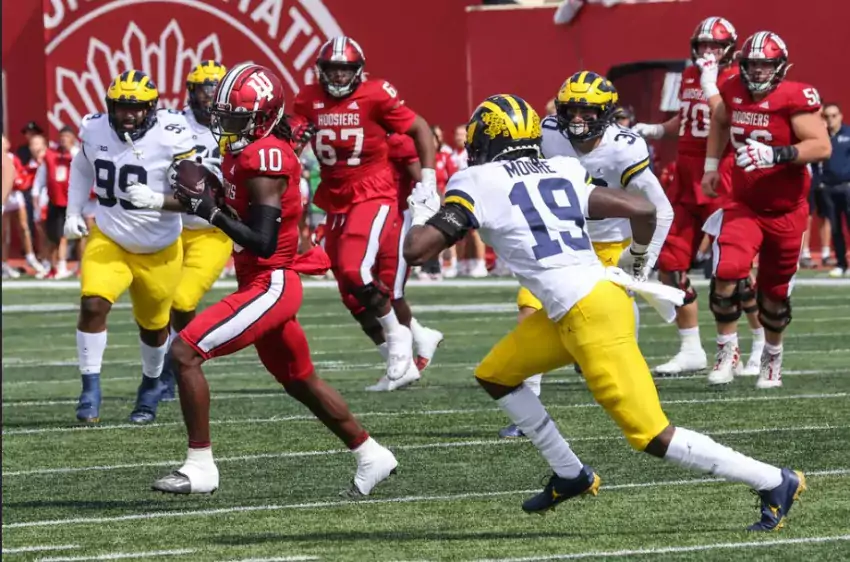
The screens were pretty annoying, right? Why was Michigan not getting lined up? Why were they having so much success, even on long downs, with this tactic? What was the plan to beat them? How did they adjust? Let's dive in.
Opening up Multiple Fronts
A Walt Bell offense doesn't attack you with the normal array of football moves. They're irregulars, light infantry, moving units across the battlefield with lightning speed and choosing where to engage, which is ideally wherever you're late to arrive in force. The last thing they want to engage in is a battle in the middle. Your troops against theirs? Game over. What they would much rather do is split into two groups, always of varied compositions, use tempo to increase the likelihood of the defense failing to find their others and line up correctly, and use the second before the snap to pick one of those two widely separated points of attack to have the next engagement.
IU's trick was to create multiple fronts, separated by so much distance that defenders had to virtually declare by alignment before the snap which one they were going to be participating in. Bazelak would read the defensive alignment during the second his line was frozen and know which battleground to choose. In this case it was whether Colson (LB on the bottom) and/or Moore (safety just above the bottom hash) were part of the play near the snap or the play out in the flat.
Notice here that the line is run-blocking; they aren't told that the pull is live. But also notice that there's no mesh point; it's not an "RPO"—or at least it's not a post-snap read. The QB sees Michigan only has two guys playing way off for the three guys lined up on the field side, makes the check in his head, and throws it.
This style also dictates how you have to defend them. All those fancy pressures and coverages you use to confound an offense trying to win old-fashioned leverage battles can't help you against Indiana, because they're so spread out that none of your defenders are close enough to each other to swap jobs. Amoeba? Forget it. Want to use Cover 3 to get them guessing if the pressure's coming from the right or left? Get used to Indiana choosing your Rip/Liz calls for you.
I think that's what's going on here.
[After THE JUMP: The adjustments, the reactions, and IU runs out of ideas first]
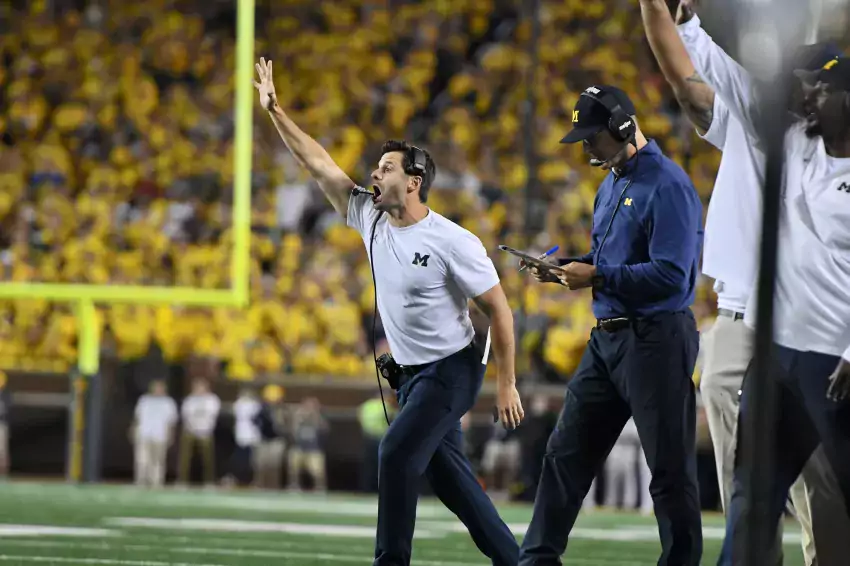
Previously: Podcast 14.0A, 14.0B, 14.0C. The Story. Quarterback. Running Back. Wide Receiver. Tight End. Offensive Tackle. Interior OL. Defensive Interior. Edge. Linebacker. Cornerback. Safety. Special Teams. 5Q5A Offense.
1. Does losing Mike Macdonald matter?
Probably. Unlike Gattis, Macdonald did not make a lateral move, and his trajectory from nobody to position coach to college DC to NFL DC speaks volumes about what the Ravens organization thinks about him. It's no disrespect to Jesse Minter to say that Michigan would have been better off if Macdonald had set up shop in Ann Arbor for several years. (Schematically, anyway. Macdonald reportedly loathed recruiting with the fury of a thousand suns.)
HOWEVA, that does not necessarily mean this year's team is going to be hindered by the transition. Going from Don Brown's all-man all-the-time approach to the Raven's diverse collection of fronts and zones is jarring. A few different players had issues with the change—or in the case of the freshmen linebackers, with trying to absorb it fresh. Gemon Green was iffy in zones, and when I was going over DL clips I think I found several instances where one guy was running a stunt and the other guy wasn't. Brown used stunts, of course, but whenever you change your playbook and your terminology you lose all that familiarity and increase the chances you bust.
Losing a DC after one year re-imposes all those costs… unless it doesn't.
Jesse Minter is a branch of the Ravens coaching tree and he has seven years as a college DC under his belt. Sam Webb on the transition, or lack thereof:
The commonality in scheme with former defensive coordinator Mike Macdonald has been obvious and has allowed for exactly the kind of seamless transition Harbaugh hoped for when he made the hire. The familiarity for the players has made the install of new elements very smooth, especially when it comes to pressure.
The defensive nomenclature certainly hasn't changed from last year, with Harbaugh announcing a 3-4 style defensive depth chart just like last year's. Minter brings the best of both worlds: continuity from the Ravens and college experience.
What he does not bring is much of a track record. His single year at an abominable Vanderbilt program (2-10 last year, 122nd in SP+, 115th on D) is no data at all. He did do an encouraging job with Georgia State, which transitioned to D-1 in 2013, his first year with the program. After two years stuck near the bottom of FEI (119th and 128th, the latter dead last) on teams that went 1-23, GSU popped up to somewhat respectable (81st and 76th) in 2015 and 2016. Building a fresh-to-FBS program into a defense in the vicinity of 2016 MSU, Kentucky, Maryland, and Arizona State is something. And he moved up over time with the Ravens.
I'd rather have kept Macdonald, even with a recruiting gap, but Minter is a young up-and-comer who came through a good organization and has one build job in his past that looks encouraging. It'll probably be fine.
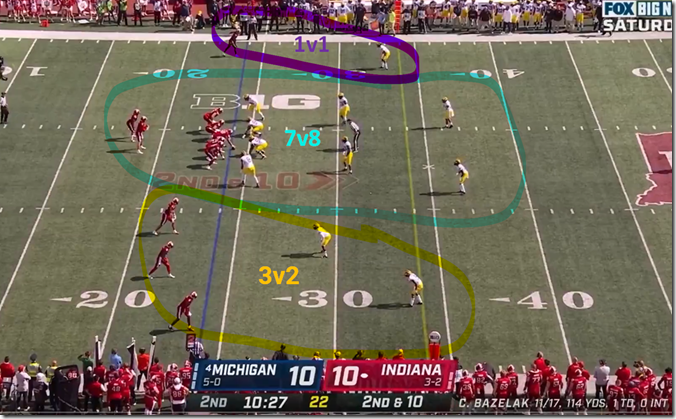
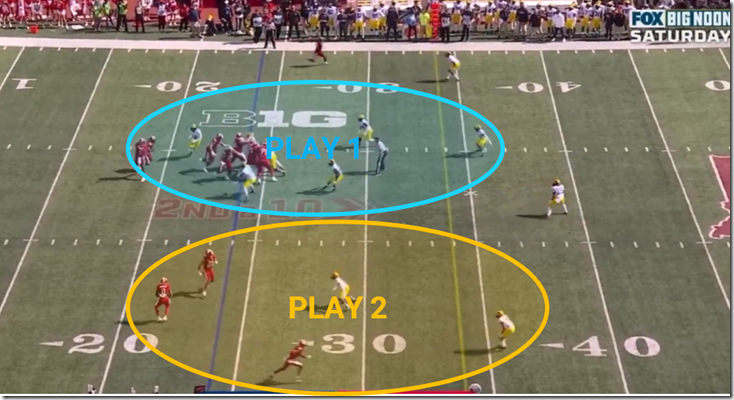
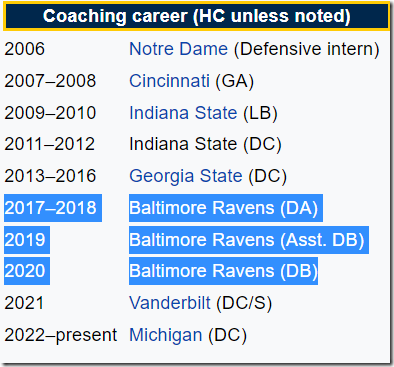
24